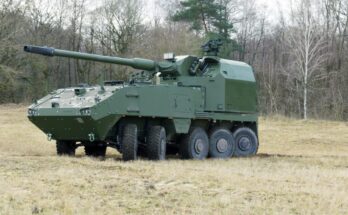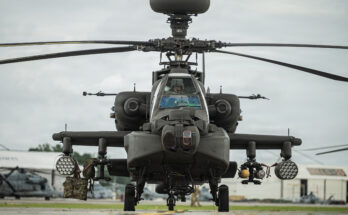
The U.S. Army has selected four industry teams to move on to the next phase of the light Robotic Combat Vehicle competition. The contenders are HDT Global, Oshkosh, a team of QinetiQ NA and Pratt & Miller, and a Textron-led team with Howe & Howe. The Army will issue a request for prototype proposals to the four contenders, and up to two contracts will be awarded in the second quarter of FY20 for four non-developmental surrogate vehicles that will be tested over the course of a year.
HDT Global is offering the Hunter WOLF; the Textron team is pitching a version of the Ripsaw; and Qinetiq is offering a variant of the Expeditionary Modular Autonomous Vehicle (EMAV).
The down-select follows a vehicle assessment in May 2019 that involved 10 systems from the aforementioned contenders as well as AM General and a team of Polaris, Applied Research Associates, and Neya Systems.
The video above shows the HDT Global Hunter WOLF in action during Urban Advanced Naval Exercise 2018 (ANTX18) at Camp Pendleton, California, March 19, 2018.
The Army’s RCV effort involves developing a family of unmanned ground vehicles operating in three weight classes: light vehicles, weighing less than 10 tons; medium vehicles, weighing between 10 and 20 tons; and heavy vehicles that could weigh between 20 and 30 tons.
The lighter variant will likely feature limited weapons, serving primarily as sensor nodes for intelligence gathering, situational awareness, and multidomain communications. The medium variant will be equipped with a medium-caliber cannon and anti-tank missiles, while the heavy variant will have space for a large-caliber cannon or other weapons. The robotic vehicles will initially be controlled remotely by soldiers, but further improvements in artificial intelligence could result in increasing levels of autonomy.
The new Ripsaw M5 can launch a #FLIR SUGV, Skyraider, and features a TacFLIR 280-HD, and the 360 SA system for situational awareness! pic.twitter.com/8WFY1wQ5Rb
— FLIR (@flir) October 14, 2019
Competitions for the light and medium variants are being managed by the National Advanced Mobility Consortium, with the Army serving as the decision authority. Submissions for the medium variant are currently under evaluation ahead of a down-select.
The Army is planning a series of surrogate tests for all three weight classes. For the large weight class, the service will begin by testing modified M113 surrogate vehicles operated by soldiers in upgraded Bradley vehicles. All of this testing will help the service develop operational standards and refine program requirements before an actual RCV is developed. The concept is so new that the Army isn’t even sure how a robotic combat vehicle would be best utilized until it is tested in the field.
Shaun's deep-rooted interest in military equipment continues in his role as a senior defense analyst with a focus on the United States. He played an integral role in the development of Forecast International's U.S. Defense Budget Forecast, an interactive online product that tracks Pentagon acquisition programs throughout the congressional budget process. As editor of International Military Markets – North America, Shaun has cultivated a deep understanding of the vast defense markets in the United States and Canada. He is a regular contributor to Forecast International's Defense & Security Monitor blog and has co-authored white papers on global defense spending and various military programs.




